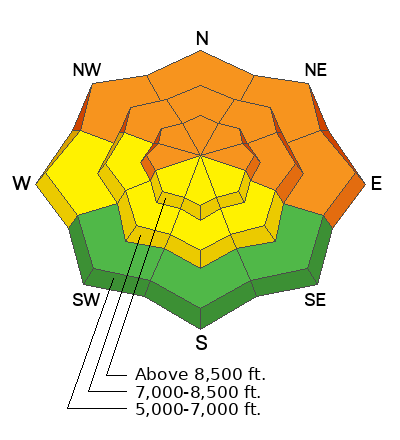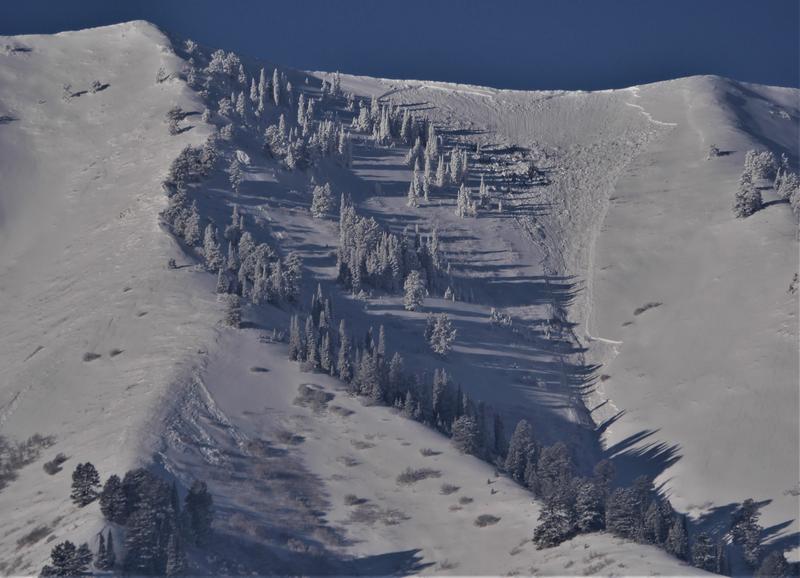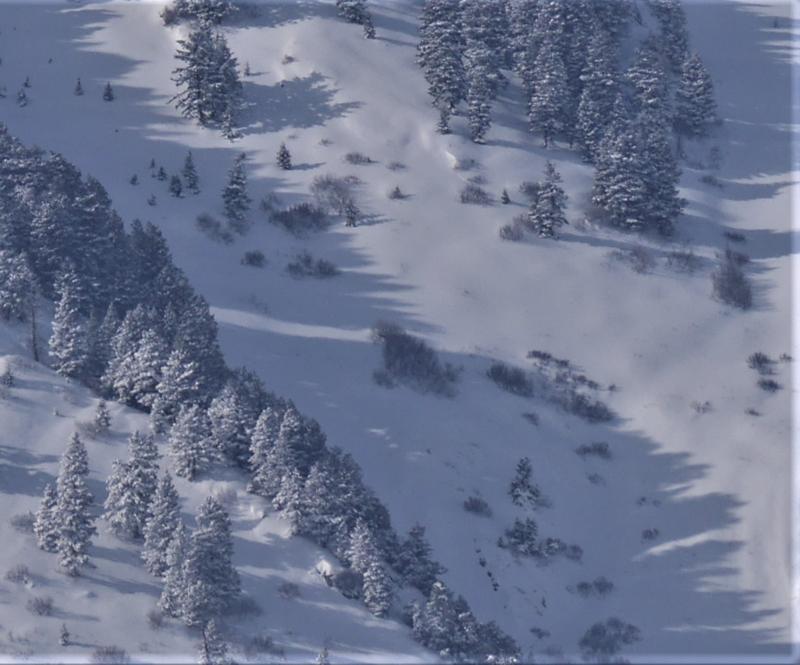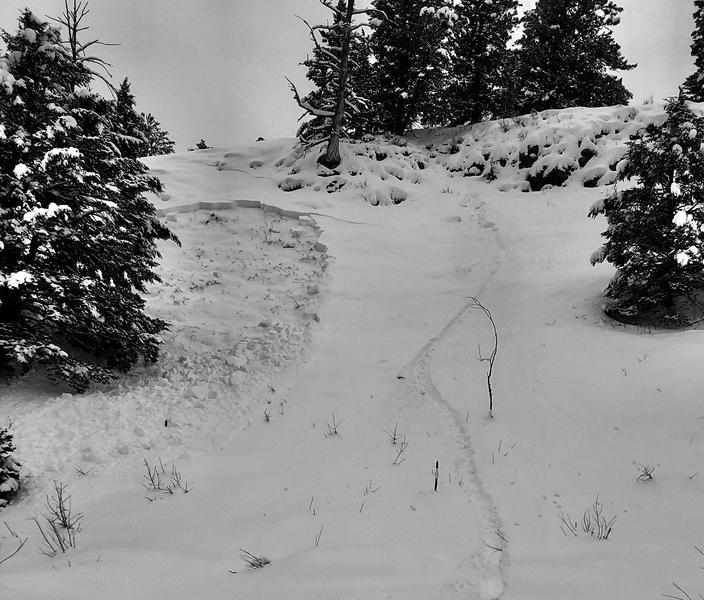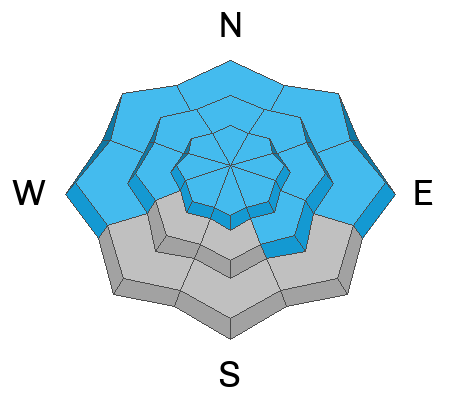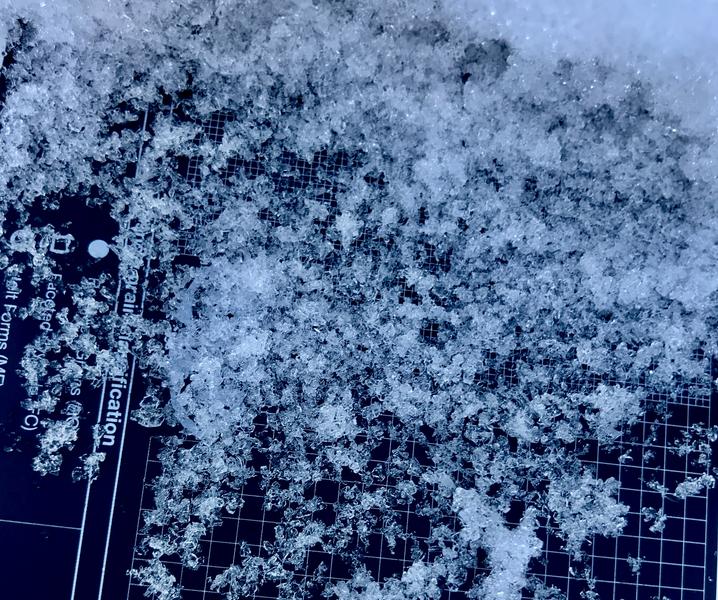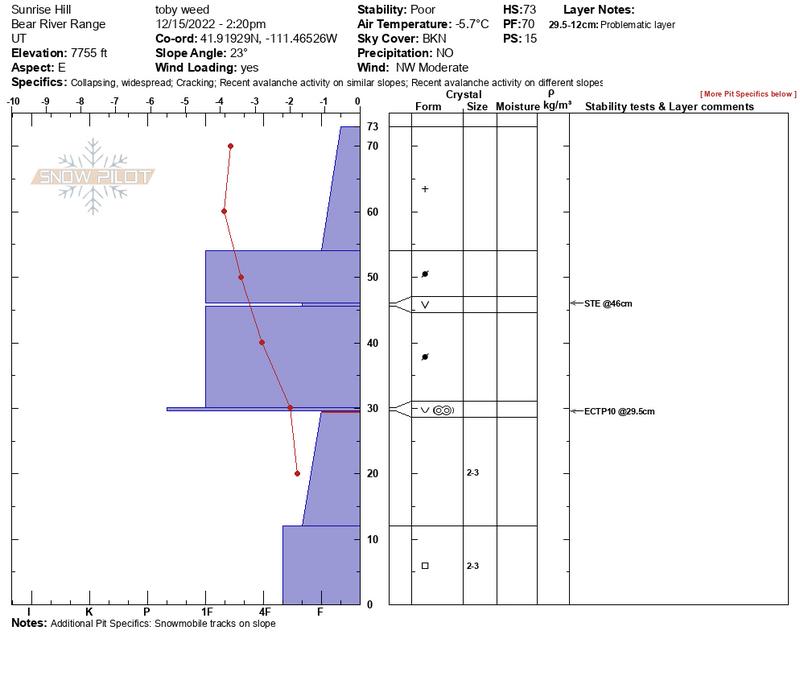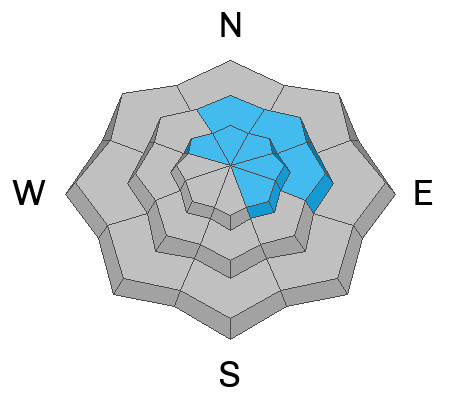We have discounted Beaver Mountain tickets for sale.
HERE.. Huge thanks to Beaver Mountain for supporting the work we do.
Very light powder stacked up this week and the snow is so nice that it's easy to forget that conditions are dangerous on many slopes steeper than 30°. Earlier in the week, heavy snow and drifting overloaded many slopes plagued by buried weak layers and poor snow structure. Most recent backcountry observations included reports of audible collapsing or "whumpfs" and some included cracking in drifted terrain. These red flags indicate unstable snow and real potential for dangerous slab avalanches failing on a buried persistent weak layer.
Winds blowing from the southwest were blowing 15 to 20 mph last night at the 8800' Red Spur weather station. I'm reading 17° F and there is 47 inches of total snow at the 8500' Tony Grove Snotel this morning.
We'll see sunny but still rather cold weather in the mountains today. Today's 8500' high temperatures will be around 19° F, and 11 to 18 mph west winds will create wind chill values as low as -8° F. Monday is expected to be sunny but cold in the mountains again, with high temperatures around 17° F. Snowy conditions will return mid-week, with heavier snowfall and decent accumulations (12" to 18" at upper elevations) possible Tuesday night through Wednesday.
I could see lots of small and a few large natural avalanches in the Wellsville Range with this weekend's clearing.
A pretty fresh natural avalanche (likely from Wednesday) was visible in Gibson Canyon in the southern bowl.
I could see this deep crown at around 7400' on the north side of Mitton Peak in Rattlesnake Canyon, (likely stepped deeper when a smaller avalanche overran the slope).
On Tuesday a rider remotely triggered a slab avalanche failing on a sugary persistent weak layer near the ground in the Beaver Mountain backcountry.
Tracks show where a solo rider landed a jump and triggered this sizable slab avalanche that failed on a sugary persistent weak layer near the ground. ( visible from Hwy 89, 7000', east facing)
Wednesday, a solo skier was caught, carried, and partially buried in Neff's Canyon in the Salt Lake foothills. The skier sustained serious injuries in the 2' deep and ~200' wide avalanche that occurred at around 7200' in elevation on a northwest facing slope. (
details and preliminary report HEREA skier was seriously injured in an avalanche in Little Cottonwood Canyon in the Central Wasatch Range on Tuesday. Our preliminary report is
HERE***See our updated list of observed avalanches from across Utah
HERE 
